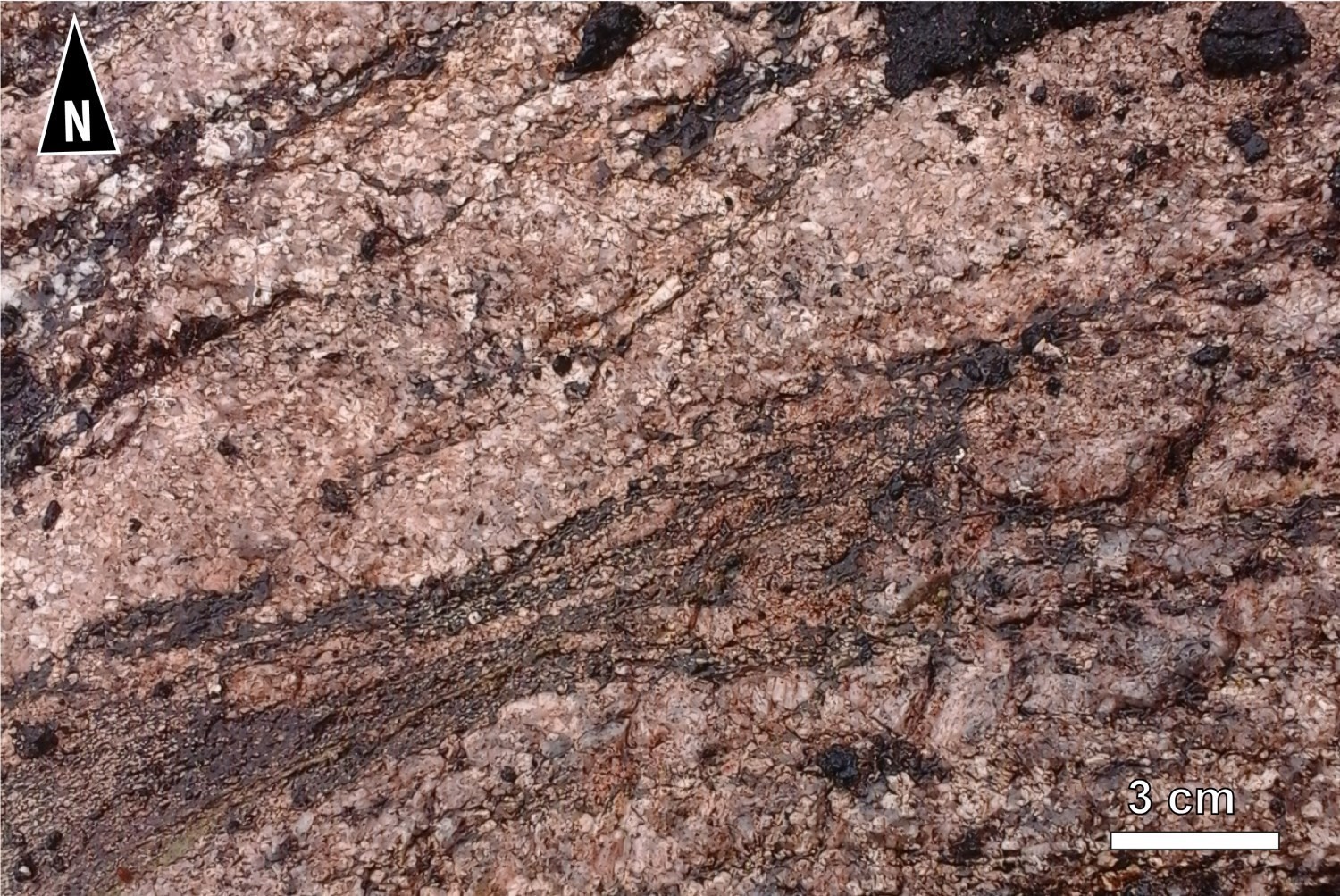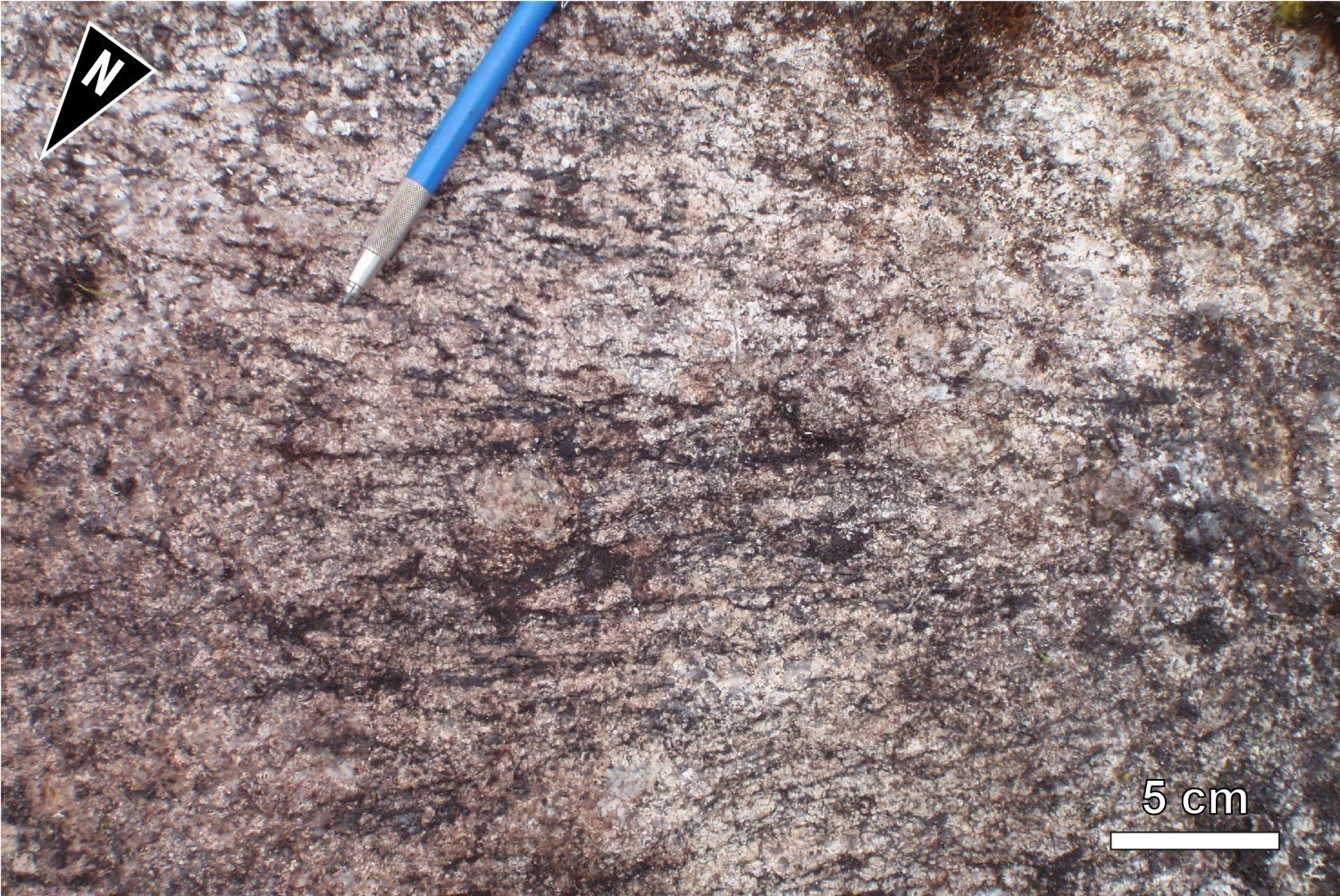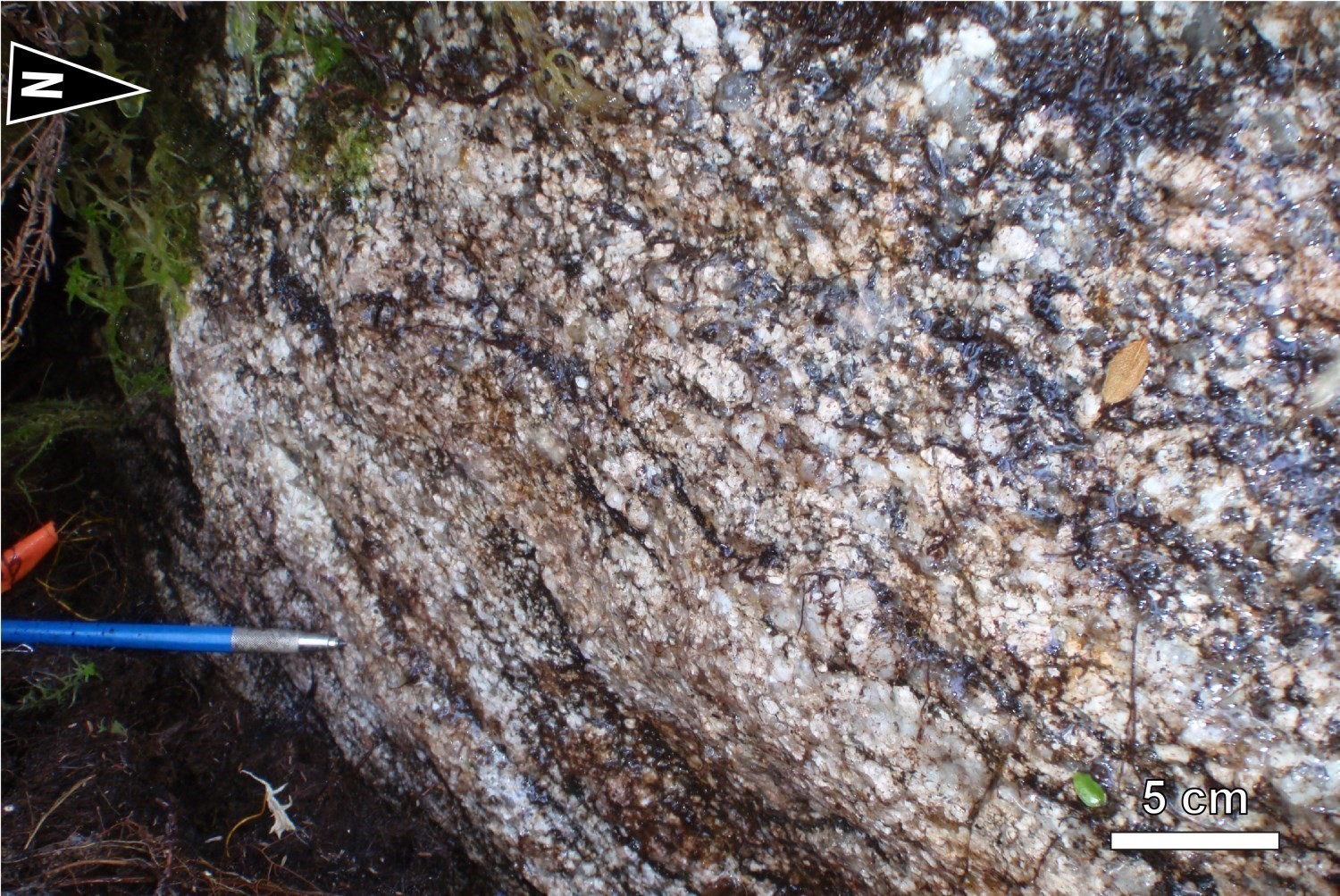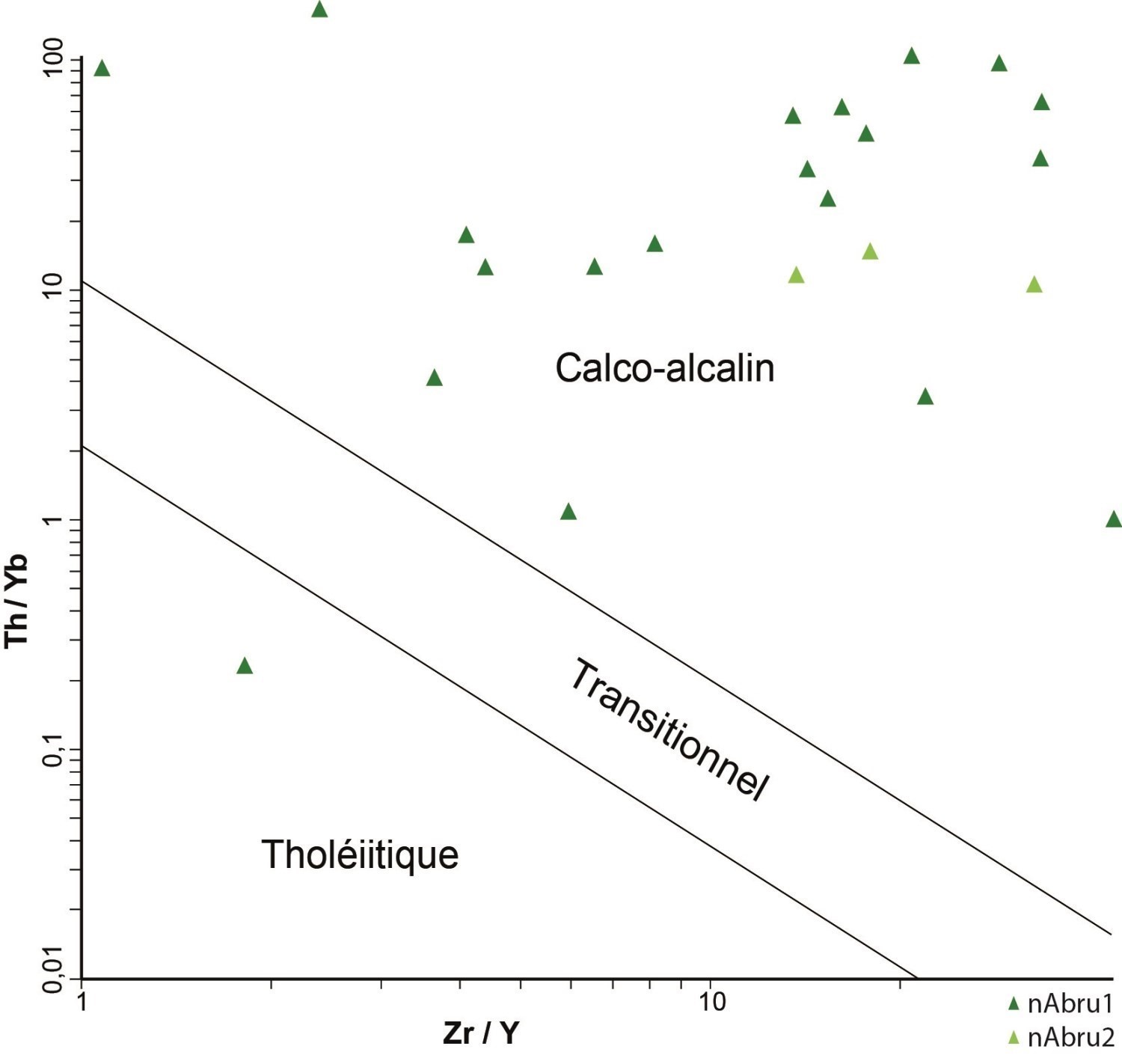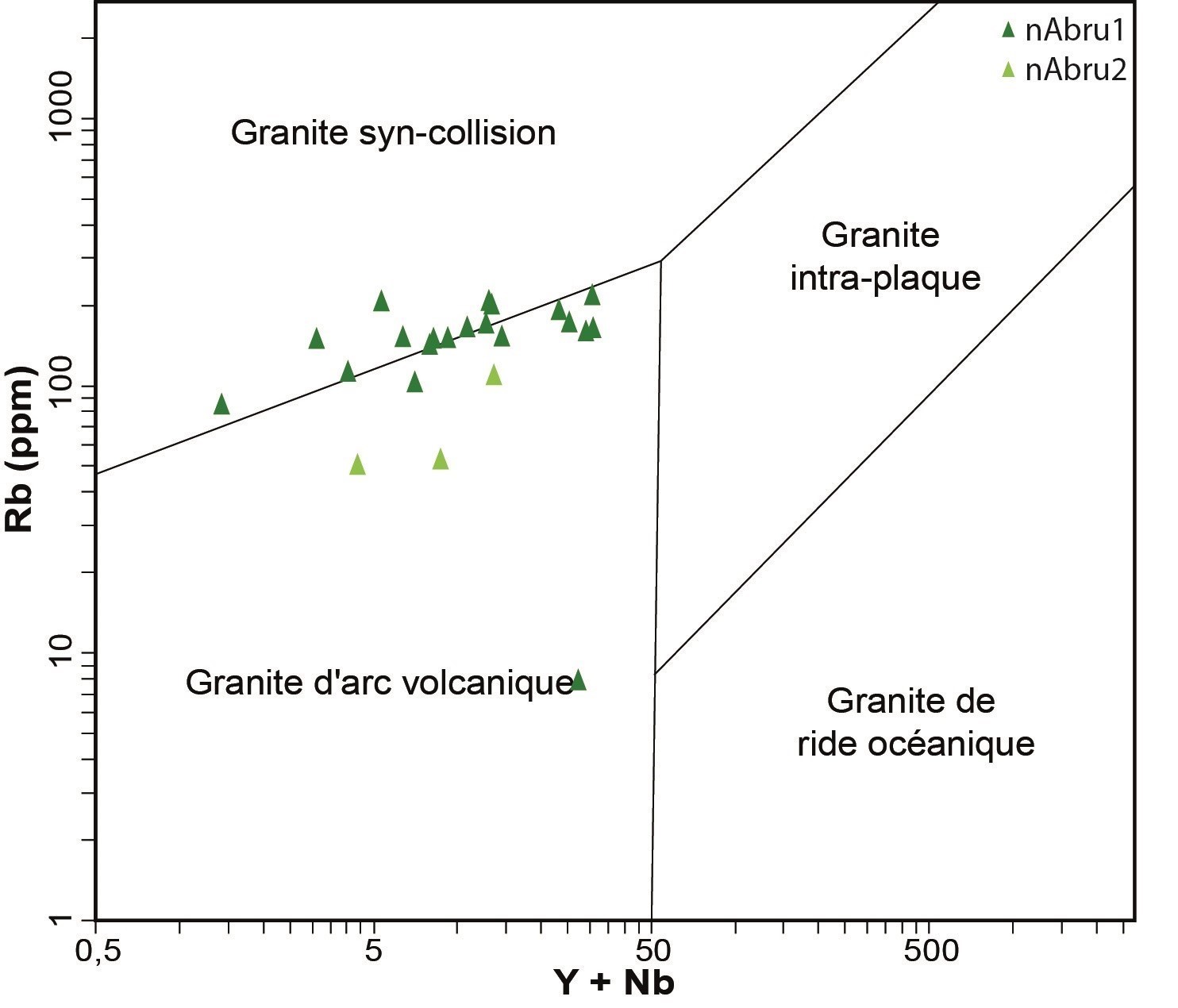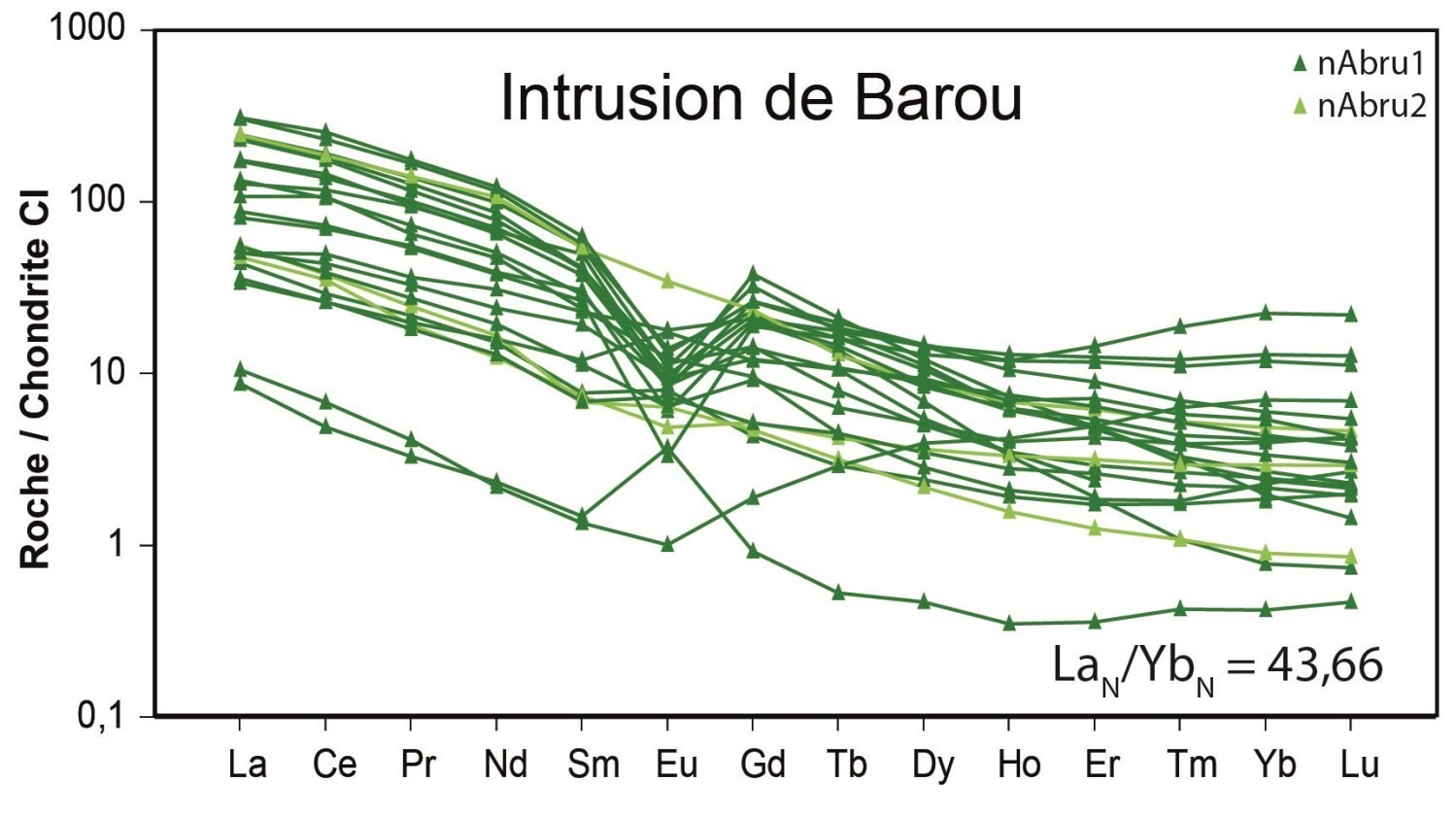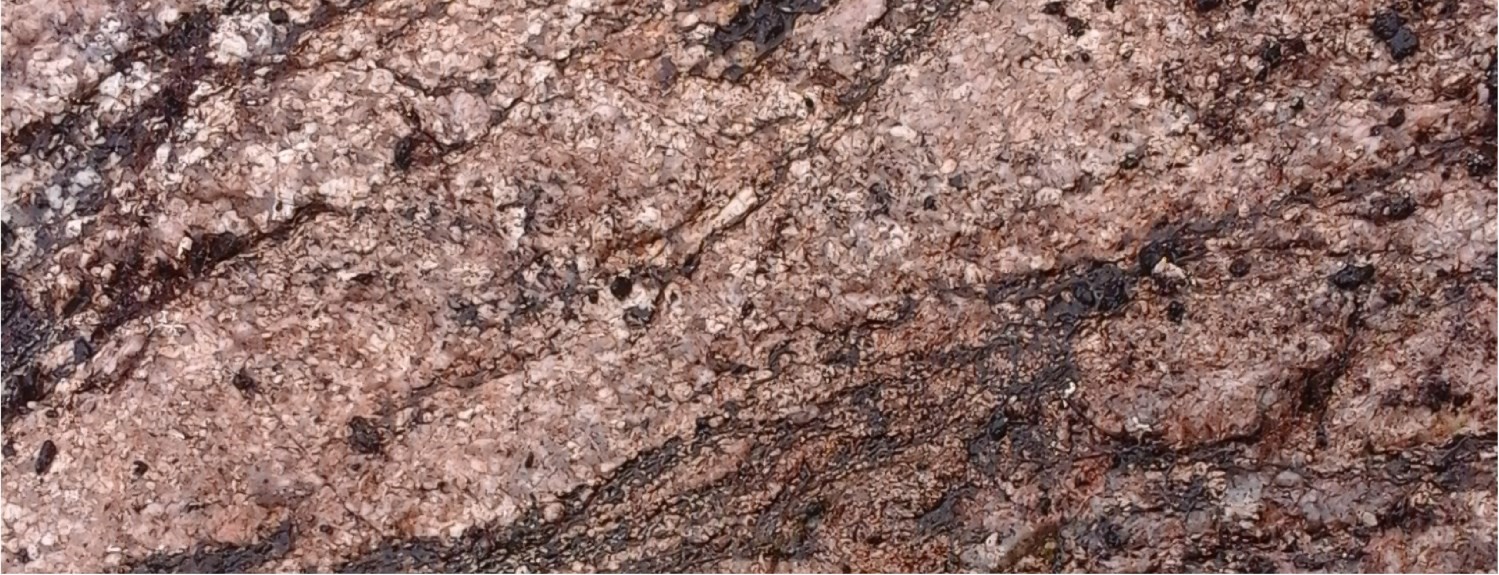
Last modified:
Translation of original French
| Author: | Beauchamp and Massei, 2018 |
| Age: | Neoarchean |
| Reference section: | |
| Type area: | Bohier Island area (NTS sheet 33A01) |
| Geological province: | Superior Province |
| Geological subdivision: | Opinaca Subprovince |
| Lithology: | Granite and granodiorite |
| Type: | Lithodemic |
| Rank: | Lithodeme |
| Status: | Formal |
| Use: | Active |
None
Background
Hocq (1985) assigned to the Lac Barou Massif the felsic rocks outcropping on NTS sheet 33A01. This massif was broken down into several units by Beauchamp and Massei following the summer 2017 mapping work conducted by the Ministère. The main lithology, granitic to granodioritic, has been renamed Barou Intrusion and has been reduced in size to better represent the topographic features of the area. Thus, the Barou Intrusion corresponds to the granites and granodiorites on the Otish Mountains, which have made these reliefs more resistant to glacial erosion.
Description
The Barou Intrusion consists of granite and granodiorite which do not have any particular distinctive features, other than their local heterogeneous appearance due to the greater or lesser digestion of paragneiss xenoliths. This unit primarily corresponds to the granitic and granodioritic bodies that make up the western part of the Otish Mountains.
Intrusion de Barou 1 (nAbru1) : Heterogenous Granite with Paragneiss Xenoliths
Unit nAbru1 is the bulk of the Barou Intrusion volume. This is smassive granite, heterogeneous with paragneiss xenoliths. The rock is coarse to medium grained, locally pegmatitic. It is white-grey to pinkish white in altered surface, locally greenish. In fresh exposure, it is more white-beige. It has a local graphic structure and can be highly perthitic. Schlierens are common. With the exception of xenolith remains, the rock contains few ferromagnesian minerals. It’s basically 1% to 5% biotite and locally 1% muscovite. The garnet has rarely been observed. Zircon and apatite are accessories. Biotite chloritization and plagioclase damouritization are locally high. The rock can also be epidotized.
Intrusion de Barou 2 (nAbru2) : Granodiorite and Massive Tonalite
Unit nAbru2 contains the same minerals and has the same alterations as unit nAbru1. It is grey-white to grey-beige, and slightly more pinkish than unit nAbru1. It contains less potassic rocks, most of which correspond to granodiorite and, more rarely, to tonalite. The rock is massive or slightly foliated.
From a geochemical perspective, rocks of the Barou Intrusion are predominantly calc-alkaline (Ross and Bédard, 2009), praluminous and type I (Maniar and Piccoli, 1989). In the diagram of Pearce et al. (1984), they plot between the volcanic arc granites field and the syn-collisional granites field. The rare earth profiles normalized to CI chondrite(McDonough and Sun, 1995) show light rare earth enrichment relative to heavy rare earths, except for the few samples containing garnet.
Thickness and distribution
The majority of Barou intrusion is in NTS sheet 33A01, along its full width. It consists of two granitic strips, 3 to 7 km wide. In the western section, it is extended in sheet 33A02 over approximately 20 km. In the eastern part, it quickly disappears in sheet 23D04, at the fault between the Opinaca and Opatica subprovinces.
Dating
None.
Stratigraphic Relationship(s)
The Barou Intrusion contains paragneiss xenoliths belonging to the Laguiche Complex. It is thus subsequent to their emplacement. Map relationships also indicate that the Barou Intrusion is itself cut by the Martel Pluton (nAmrt) and Kaaispaach Suite (nAkpc). In the southern portion of sheet 33A01, the terrain formed by the Barou Intrusion is moulded by the Otish Sedimentary Basin, whose units have been deposited on Archaean rocks. Finally, the Barou Intrusion is cut by a dyke belonging to the Mistassini Dyke Swarm, (nAmib).
Paleontology
Does not apply.
References
| Author(s) | Title | Year of Publication | Hyperlink (EXAMINE or Other) |
|---|---|---|---|
| BEAUCHAMP, A.-M. – MASSEI, F. | Géologie de la région de l’île Bohier, au contact entre les sous-provinces d’Opatica, d’Opinaca et le bassin d’Otish, au nord de Mistassini, municipalité Eeyou Istchee Baie-James, Québec, Canada. Ministère de l’Énergie et des Ressources naturelles, Québec. | 2018 | Geological Bulletin |
| HOCQ, M. | Géologie de la région des lacs Campan et Cadieux, Territoire-du-Nouveau-Québec. Ministère des Ressources naturelles, Québec; ET 83-05, 188 pages. | 1985 | ET 83-05 |
| MANIAR, P.D. – PICCOLI, P.M. | Tectonic discrimination of granitoids. Geological Society of America Bulletin; volume 101, pages 635-643. | 1989 | Source |
| MCDONOUGH, W.F. – SUN, S.S. | The composition of the earth. Chemical Geology; volume 120, pages 223-253. | 1995 | Source |
| PEARCE, J.A. – HARRIS, N.W. – TINDLE, A.G. | Trace element discrimination diagrams for the tectonic interpretation of granitic rocks. Journal of Petrology; volume 25, pages 956-983. | 1984 | Source |
| ROSS, P.-S. – BÉDARD, J.H. | Magmatic affinity of modern and ancient subalkaline volcanic rocks determined from trace-element discriminant diagrams. Canadian Journal of Earth Sciences; volume 46, pages 823-839. | 2009 | Source |


